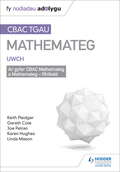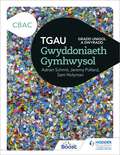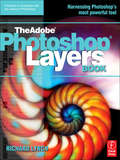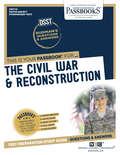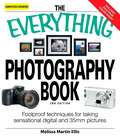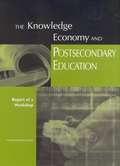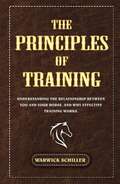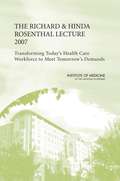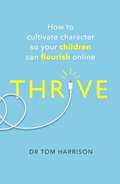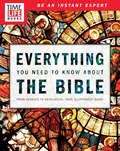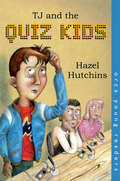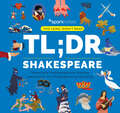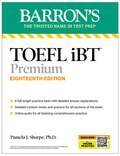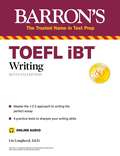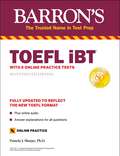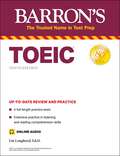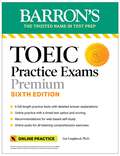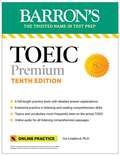- Table View
- List View
TGAU CBAC Canllaw Adolygu Mathemateg Uwch (WJEC GCSE Maths Higher: Mastering Mathematics Revision Guide Welsh-language edition)
by Gareth Cole Keith Pledger Joe PetranExam Board: WJECLevel: GCSESubject: MathematicsFirst Teaching: September 2015First Exam: June 2017Welsh language edition. Maximise your students' grade potential with a step-by-step approach that builds confidence through topic summaries, worked examples and exam style questions.- Identify areas of improvement to focus on through diagnostic tests for each topic.- Develop exam skills and techniques with skills-focused exam-style questions and exam advice on common pitfalls.- Build understanding and confidence with clear explanations of each topic covering all the key information needed to succeed.- Consolidate revision with 'two weeks to go' summaries for each topic.
TGAU Gwyddoniaeth Gymhwysol CBAC: Single and Double Award
by Jeremy Pollard Adrian Schmit Sam HolymanDevelop students' understanding of Applied Science with engaging content and support throughout the course, produced by a trusted author team and an established WJEC GCSE Science publisher.Students will be able to:- learn what they need to know, with content clearly signposted to support the WJEC GCSE Applied Science Single Award and Double Award qualifications, at both lower and higher tier - approach exams with confidence, by checking their understanding with Test yourself questions, Discussion points, exam-style questions and useful Chapter summaries- build their practical skills with support for all specified practicals along with extra tasks for broader learning- develop the core mathematical skills required by the course with worked examples throughout the book.
TGAU Gwyddoniaeth Gymhwysol CBAC: Single and Double Award
by Jeremy Pollard Adrian Schmit Sam HolymanDevelop students' understanding of Applied Science with engaging content and support throughout the course, produced by a trusted author team and an established WJEC GCSE Science publisher.Students will be able to:- learn what they need to know, with content clearly signposted to support the WJEC GCSE Applied Science Single Award and Double Award qualifications, at both lower and higher tier - approach exams with confidence, by checking their understanding with Test yourself questions, Discussion points, exam-style questions and useful Chapter summaries- build their practical skills with support for all specified practicals along with extra tasks for broader learning- develop the core mathematical skills required by the course with worked examples throughout the book.
THE ADOBE PHOTOSHOP LAYERS BOOK: Harnessing Photoshop's Most Powerful Tool, Covers Photoshop Cs3
by Richard LynchLayers are the building blocks for working in Photoshop. With the correct use of the Layers Tool, you can edit individual components of your images nondestructively to ensure that your end result is a combination of the best parts of your work. Despite how important it is for successful Photoshop work, the Layers Tool is one of the most often misused and misunderstood features within this powerful software program. This book will show you absolutely everything you need to know to work with layers, including how to use masks, blending, modes and layer management. You'll learn professional techniques as you become completely familiar with the power of layers as an organizational, correction, and revision tool that will quickly become an essential part of your overall Photoshop workflow.
THE CIVIL WAR & RECONSTRUCTION: Passbooks Study Guide (DANTES Subject Standardized Tests (DSST))
by National Learning CorporationThe DSST Subject Standardized Tests are comprehensive college and graduate level examinations given by the Armed Forces, colleges and graduate schools. These exams enable students to earn college credit for what they have learned through self-study, on the job, or by other non-traditional means. The DSST The Civil War & Reconstruction Passbook® prepares candidates for the DSST exam, which enables schools to award credit for knowledge acquired outside the normal classroom environment. It provides hundreds of questions and answers in the areas that will likely be covered on your upcoming exam, including but not limited to: causes of the war; slavery and abolition; westward expansion; military battles; the Reconstruction Era; and more.
THE EVERYTHING® PHOTOGRAPHY BOOK 2nd Edition
by Melissa Martin EllisPeople love taking pictures, and there are more photography options today than ever before! Including thirty black-and-white photos depicting proper shooting, development, and general photography techniques, this photography guide covers: Selecting the right camera, lens, and accessories The pros and cons of film vs. digital Controlling exposures with apertures and shutter speeds Black-and-white versus color photography Ways to modify light and use flash Printing and developing photos Turning a photography hobby into a career Whether they're shooting portraits and still life or travel and nature photos, this is the perfect resource for any photographer. From the beginner to the experienced shutter-clicker, enthusiasts of all ages and skill levels will find the information they need to take great pictures.
THE Knowledge Economy AND POSTSECONDARY EDUCATION: Report of a Workshop
by Committee on the Impact of the Changing Economy on the Education SystemThe Workshop on the Knowledge Economy and Postsecondary Education documents changes seen in the postsecondary education system. In her report Lisa Hudson focuses on who is participating in postsecondary education; Tom Bailey concentrates on community colleges as the most responsive institutions to employer needs; Carol Twigg surveys the ways that four-year institutions are attempting to modify their curricular offerings and pedagogy to adapt those that will be more useful; and Brian Pusser emphasizes the public’s broader interests in higher education and challenges the acceptance of the primacy of job preparation for the individual and of "market" metaphors as an appropriate descriptor of American higher education. An example of a for-profit company providing necessary instruction for workers is also examined.Richard Murnane, Nancy Sharkey, and Frank Levy investigate the experience of Cisco high school and community college students need to testify to their information technology skills to earn certificates. Finally, John Bransford, Nancy Vye, and Helen Bateman address the ways learning occurs and how these can be encouraged, particularly in cyberspace.
THE PRINCIPLES OF TRAINING: Understanding The Relationship Between You And Your Horse, And Why Effective Training Works
by Warwick Schiller“As to methods there may be a million and then some, but principles are few. The man who grasps principles can successfully select his own methods. The man who tries methods, ignoring principles, is sure to have trouble.” - Harrington Emerson Do you ever feel overwhelmed by the sheer number of training decisions to be made when working with a horse? Should you speed up, slow down, turn left, turn right? What transition should you make next? Which body part should you move where? What if you didn’t need to memorize a million techniques and scenarios, but just needed to understand the principles at play in each situation? The Principles of Training offers readers an understanding of the 12 fundamental principles that all successful horse people use and illustrates them with real-life examples to help readers fully understand why effective training works.
THE RICHARD & HINDA ROSENTHAL LECTURE 2007: Transforming Today's Health Care Workforce to Meet Tomorrow's Demands
by Institute of Medicine of the National AcademiesThe National Academies Press (NAP)--publisher for the National Academies--publishes more than 200 books a year offering the most authoritative views, definitive information, and groundbreaking recommendations on a wide range of topics in science, engineering, and health. Our books are unique in that they are authored by the nation's leading experts in every scientific field.
THRIVE: How to Cultivate Character So Your Children Can Flourish Online
by Dr Tom HarrisonWinner of the International Federation for Family Development Award.When Dr Tom Harrison, a leading expert in the field of character education and the Internet, bought his daughter her first smartphone, a major milestone had been reached: she had entered the 'cyber-world'. Harrison no longer needed to know what to think; he needed to know what to do. This is the first practical book of its kind to show parents and teachers how to develop character as the foundation for helping young people to thrive in their online interactions. It answers the question: How do we prepare our children to do the right thing when no one is watching?Based on his own experience as a parent, more than a decade of research and thousands of conversations with parents, teachers, children and policymakers, the REACT and THRIVE models have been developed to engage with character, wellbeing, social and emotional learning, ethics and digital citizenship - all the ingredients for flourishing online.The world is waking up to the importance of character for individual and wider societal flourishing. Harrison is at the forefront of this movement and is regularly invited to advise policymakers and thousand of teachers and parents around the world. This book is a must-read for parents and educators who want to help children not just survive but thrive online in their cyber-worlds.
THRIVE: How to Cultivate Character So Your Children Can Flourish Online
by Dr Tom HarrisonWinner of the International Federation for Family Development Award.When Dr Tom Harrison, a leading expert in the field of character education and the Internet, bought his daughter her first smartphone, a major milestone had been reached: she had entered the 'cyber-world'. Harrison no longer needed to know what to think; he needed to know what to do. This is the first practical book of its kind to show parents and teachers how to develop character as the foundation for helping young people to thrive in their online interactions. It answers the question: How do we prepare our children to do the right thing when no one is watching?Based on his own experience as a parent, more than a decade of research and thousands of conversations with parents, teachers, children and policymakers, the REACT and THRIVE models have been developed to engage with character, wellbeing, social and emotional learning, ethics and digital citizenship - all the ingredients for flourishing online.The world is waking up to the importance of character for individual and wider societal flourishing. Harrison is at the forefront of this movement and is regularly invited to advise policymakers and thousand of teachers and parents around the world. This book is a must-read for parents and educators who want to help children not just survive but thrive online in their cyber-worlds.
TIME-LIFE Everything You Need To Know About the Bible: From Genesis to Revelation, Your Illustrated Guide
by Time-Life BooksThe Bible is one of the greatest, most influential books ever written. It is also one of the most complex and challenging. Now, the editors of Time-Life Books take you on tour of its extraordinary pages. This beautifully illustrated, simple-to-use guide covers the essential stories and Scripture, from the birth of creation to the end of days. Inside, you'll find the Bible's most important people, stories, and messages, Inspirational "Verses to Know", Biblical citations for easy reference, Color maps and timelines.Meet the great nation-builders, kings, prophets and disciples. Discover the life, works and teachings of Jesus Christ. Whether you are new to the Bible or already a daily reader, this must-have reference will bring its magnificent pages to life.
TJ and the Quiz Kids (Orca Young Readers)
by Hazel HutchinsWhen master fact-gatherers TJ and Seymour are asked to join the school Quiz Kids team, TJ thinks Seymour should take the stage at the upcoming contest against the high-pressure Fairview School team. TJ is already more than occupied rescuing his cats and helping Gran get ready for her upcoming trip to Belize. When he goes with his dad to help with a renovation job on a huge house on Fairview Hill, he and T-Rex tangle with a rich girl and her giant dog, Frooie. Then Seymour develops stage fright, Alaska goes missing and the girl from the big house shows up on the Fairview quiz team. TJ knows he has to sort things out—fast!
TL;DR Shakespeare: Dynamically illustrated plot and character summaries for 12 of Shakespeare's greatest plays (Too Long; Didn't Read)
by SparkNotesThis refresher reference volume features concise character and plot summaries for 12 of Shakespeare&’s best-known plays, drawn from the SparkNotes website and illustrated with colorful infographics. Each of the 12 chapters in this volume runs 6 to 8 pages of text taken from the SparkNotes website, and is illustrated with colorful infographics for easy consumption. The 12 plays featured—six comedies and six tragedies—are among the most famous and most taught of Shakespeare&’s dramas, including Hamlet, King Lear, Macbeth, Romeo and Juliet, The Taming of the Shrew, The Merchant of Venice, Othello, and Julius Caesar.
TNPSC Combined Group IV and VAO Part 3 Social Science - Competitive Exam: TNPSC ஒருங்கிணைக்கப்பட்ட Group IV மற்றும் VAO தேர்வு பகுதி மூன்று சமூக அறிவியல்
by V V K Subburasuஇந்த புத்தகம் வீ.வீ.கே. சுப்புராசு அவர்களால் எழுதப்பட்டு சுரா பதிப்பகத்தால் வெளியிடப்பட்டுள்ளது. இப்புத்தகத்தில் ஒருங்கிணைந்த குடிமைப் பணிகள் தேர்வு 4 மற்றும் கிராம நிர்வாக அலுவலர் பணிகளுக்கான சமூக அறிவியல் பாடங்களை நன்கு படித்து அறிந்து கொள்ளலாம் மேலும் முந்தைய டிஎன்பிஎஸ்சி தேர்வில் கேட்கப்பட்ட வினாக்களுக்கான விடைகள் கொடுக்கப்பட்டுள்ளது
TOEFL iBT Premium with 8 Online Practice Tests + Online Audio, Eighteenth Edition (Barron's Test Prep)
by Pamela J. Sharpe Ph.D.Barron&’s newest edition of TOEFL iBT has been fully updated to reflect the new TOEFL format and provides flexible study options and key skills review to help you study what you need to know for the test. This edition includes: 8 full-length TOEFL iBT practice tests that reflect the most recent test format with answer explanations Comprehensive review of required academic and language skills Four video lessons on the key skills needed to succeed on the TOEFL: Note Taking, Paraphrasing, Summarizing, and Synthesis Grammar review that supports the Speaking and Writing Sections Online audio for all listening prompts
TOEFL iBT Writing (Barron's Test Prep)
by Lin Lougheed Ph.D.TOEFL iBT Writing prepares students to succeed on the TOEFL's Independent Task, the all-important essay question, and on the Integrated Task, which combines reading, listening, and writing skills.The author presents a three-step program designed to help students write like native speakers of English. His coaching entails gathering ideas, organizing details, and developing the chosen topic into clear, grammatical written English. He also provides exercises in proofreading and editing. Model essays and model integrated tasks are included for students to read and analyze. Audio lectures typical of those presented on actual tests are included online.Lin Lougheed presents a three-step program designed to help students write like native speakers of English. The three steps include:Gathering ideasOrganizing detailsDeveloping the chosen topic into clear, grammatical written EnglishThe book also provides:Exercises in proofreading and editingModel essays and integrated tasks to read and analyzeOnline audio lectures similar to those presented on actual testsPublisher's Note: Products purchased from Third Party sellers are not guaranteed by the publisher for quality, authenticity, or access to any online entitlements included with the product.
TOEFL iBT: with 8 Online Practice Tests (Barron's Test Prep)
by Pamela J. Sharpe Ph.D.Barron&’s newest edition of TOEFL iBT has been fully updated to reflect the new TOEFL format and provides flexible study options and key skills review to help you study what you need to know for the test. You&’ll also get 8 full-length practice tests, 8 one-hour practice tests, four video lessons, online PowerPoint presentations, and online audio files for all the practice to help you feel prepared on test day.This edition includes:Eight full-length TOEFL iBT practice tests with answer explanations in both the book and online8 one-hour practice testsA review of required academic and language skills with four video lessons and a grammar review that supports the Speaking and Writing SectionsAn online pronunciation guide that features over 200 campus flashcards with vocabulary terms and example sentencesMP3 audio files online for all promptsA general overview of the TOEFL iBTPowerPoint review presentations with handouts and resources for tutors and teachers
TOEIC (Barron's Test Prep)
by Lin Lougheed Ph.D.Barron&’s TOEIC is updated to include online audio files for all audio prompts presented in the book.Test-takers will find:Six full-length practice tests identical in format and question types to the current TOEIC with answer explanations for all questionsTopics and vocabulary most frequently seen on the actual TOEICExtensive practice in listening and reading comprehension skillsA high score on the TOEIC is required by many businesses and institutions when considering job applicants whose first language is not English. Publisher's Note: Products purchased from Third Party sellers are not guaranteed by the publisher for quality, authenticity, or access to any online entitlements included with the product.
TOEIC Practice Exams: 6 Practice Tests + Online Audio, Sixth Edition (Barron's Test Prep)
by Lin Lougheed Ph.D.Barron&’s TOEIC Practice Exams is designed for ESL students preparing to take the Test of English for International Communication.This manual provides students with extensive practice in the actual test-taking experience as an efficient way of improving their score when they take the actual TOEIC.Inside students will findSix full-length practice exams that reflect the actual TOEIC in length, subject matter, question types, and degree of difficulty.Answer explanations for all questionsOnline audio for all six TOEIC listening comprehension sectionsRecommendations for web-based self-study activities
TOEIC Premium: 6 Practice Tests + Online Audio, Tenth Edition (Barron's Test Prep)
by Lin Lougheed Ph.D.Barron&’s TOEIC Premium is designed for ESL students preparing to take the Test of English for International Communication.Test-takers will find:Extensive practice in listening and reading comprehension skillsSix full-length practice tests identical in format and question types to the current TOEIC with answer explanations for all questionsTopics and vocabulary most frequently seen on the actual TOEICOnline audio for all six TOEIC listening comprehension sectionsRecommendations for web-based self-study activities
TOOLS FOR Ethical Thinking and Practice in Family Life Education
by National Council On Family RelationsThe fourth edition includes updates of all articles, including "The Domains of Family Practice Model: A Summary of Its Development and Purpose" and "Professional Ethics and Practice in Family Life Education." A chapter on Family Life Educator content and practice guidelines includes content from the Certified Family Life Educator (CFLE) Exam and other valuable sources. An update to the ethical thinking and practice guidelines developed by the Minnesota Council on Family Relations includes a helpful case study process.
TOP CLASS English FAL Grade 8 Learner's Book: UBC contracted
by AnonThis Senior Phase English First Additional Language Learners Book is CAPS Approved and one of many titles available in the TOP CLASS series
TRANSMATHTM: Developing Number Sense
by John Woodward Mary StrohTransMath (2nd Edition) Developing Number Sense Student Text (Level 1)
